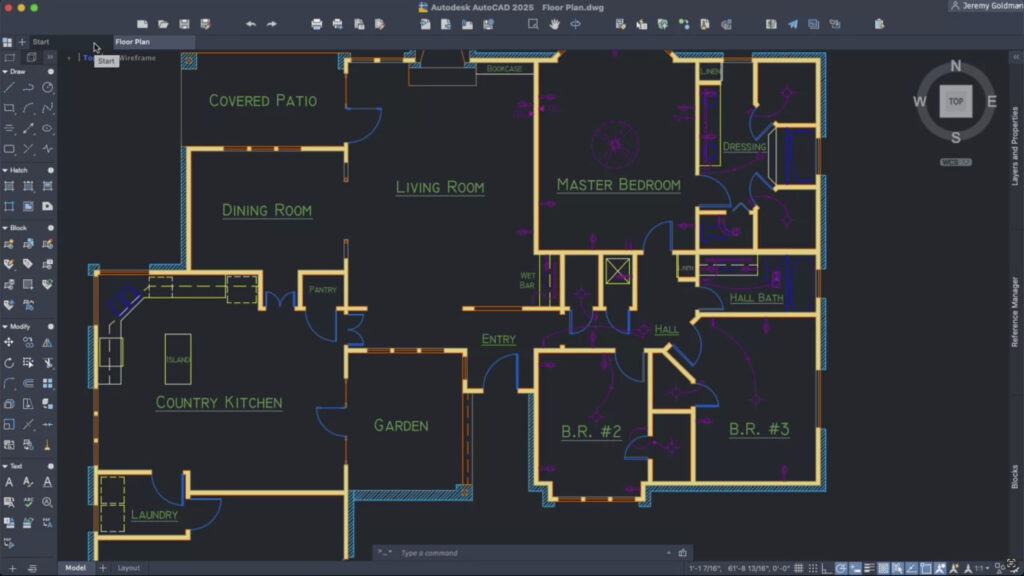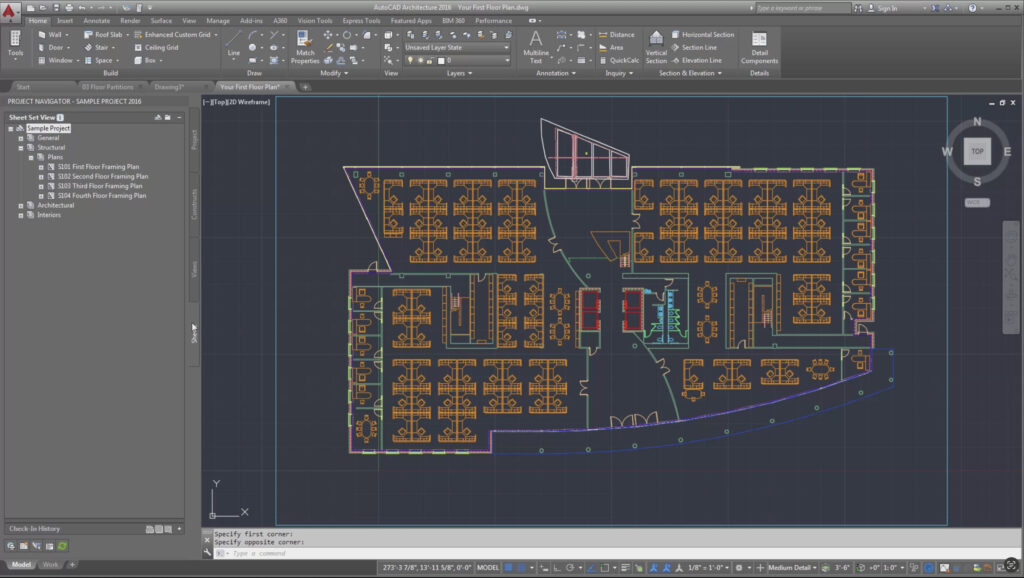If you’re working on a Mac and use CAD software, you may be confused about the difference between AutoCAD for Mac and AutoCAD Architecture.
As you may have already discovered, AutoCAD Architecture is Windows only and can only be run on Macs using Boot Camp (Intel Macs only) or virtualization software on Apple Silicon Macs (check out me running AutoCAD Architecture on a Mac here).
On the surface they look similar, but when you dig into the details such as features, workflows, and industry orientation, the differences become more apparent.
In this article I’ll cover every difference including:
- Platform & license differences
- Feature comparison (2D/3D, object intelligence, toolsets)
- Mac-specific considerations
- Use-case scenarios: When to pick which
- Summary & quick comparison table
- FAQ
Let’s dive in.
Table of Contents
Platform & License Differences

The Mac version of AutoCAD is a native macOS application and is part of Autodesk’s software suite for Mac users. It offers all the essentials you expect in AutoCAD: 2D drafting, 3D modelling (solids/surfaces/mesh), annotation, DWG support etc.
It includes Mac-specific user interface features such as Cover Flow navigation, multi-touch gestures, multiview split screen, and Touch Bar support (on supported Macs).
Licensing is via subscription only and includes access to the AutoCAD web app, mobile app, etc.
AutoCAD Architecture is a Windows-only product designed specifically for architectural work. It adds industry-specific objects (walls, doors, windows), scheduling, room tags, etc.

It’s also only available on subscription – neither AutoCAD for Mac or AutoCAD Architecture are available with perpetual licenses anymore.
AutoCAD For Mac vs AutoCAD Architecture Feature Comparison
Here’s a breakdown of the key features and how each product stacks up, especially from the viewpoint of a using them on a Mac.
| Feature | AutoCAD for Mac | AutoCAD Architecture (Windows) |
|---|---|---|
| 2D drafting & annotation | Full core CAD – lines, arcs, annotation, dimensions, tables. Comes with some user interface refinements specifically for Macs. | Also supports all core CAD functions (since it’s built on AutoCAD) plus extra architectural features. |
| 3D modelling (solids/surfaces/mesh) | Yes – supports 3D solids, surfaces and meshes on Mac version. | Yes, but with additional architectural object intelligence (walls, doors, rooms) that behave contextually. |
| Architectural/GIS Toolset (walls, doors, schedules) | No dedicated architecture toolset support. Mac version lacks the Architecture vertical features. | Yes: includes style-based architectural objects, dynamic schedules, room area features, etc. |
| Mac User Interface Features | Yes: Cover Flow, Multi-touch, Touch Bar. | N/A (Windows only) |
| API/Customization support | On Mac, some APIs exist, but historically Windows version has broader API support (.NET, VBA, LISP, etc). For Mac, some features may be missing or limited. | Full Windows ecosystem: rich customization, third-party plugins, toolsets |
| Platform/file compatibility | DWG compatibility with Windows version but when collaborating with architecture toolset users you may stumble on object-enabler issues. | Designed for architecture workflows; users exchanging with plain AutoCAD may need to consider compatibility of AEC objects. |
| Learning curve & workflow | Standard drafting workflow. | Adds layer of architectural object-based workflow; steeper learning if coming from plain AutoCAD. |
Key Takeaways
- If your work is mainly general CAD drafting, 2D/3D modelling on Mac, and you demand native macOS support – then AutoCAD for Mac is entirely viable.
- If you’re in the architecture field working with walls/windows/rooms as intelligent objects, needing schedules, architectural annotations, then AutoCAD Architecture offers significant productivity benefits – but only on Windows.
Summary: Which Should You Use?
If you’re a Mac-using designer doing general drafting and 3D modelling, but not heavy architecture go for AutoCAD for Mac. It’s native, efficient, fully functional for 2D/3D and has a tailored Mac user interface.
However, if you’re an architect who needs walls, doors, windows as smart objects, schedules, room tags, etc, and you have a Mac consider running Windows on your Mac so that you can use AutoCAD Architecture.
Ideally, I’d recommend using a virtual machine such as Parallels or VMware Fusion for this.
If you draft on Mac but hand off to architects using ACA on Windows then you can still use AutoCAD for Mac for the draft portion, but ensure you coordinate with the ACA users. This means communicating about format, layers, object types.
If you’re a Mac user, working in small-scale architecture or interior design and don’t need full ACA features AutoCAD for Mac should fit fine as you won’t need ACA’s advanced features.
| Product | Platform | Best For | Limitations |
|---|---|---|---|
| AutoCAD for Mac | macOS (native) | General CAD on Mac, 2D/3D drafting | No architecture-vertical features (walls/doors/etc) |
| AutoCAD Architecture | Windows | Architecture workflows with intelligent objects, schedules | Windows only; steep learning curve; Mac users must virtualize or use Windows machine |
FAQ
Can I install AutoCAD Architecture on my Mac?
Not natively as its only supported on Windows. You’d need to run Windows (via Boot Camp or a virtual machine such as Parallels) on your Mac to use it. Check out how to run AutoCAD Architecture on a Mac for more.
Are files from AutoCAD Architecture compatible with AutoCAD for Mac?
You can exchange DWG files – but architectural objects created in ACA may not behave or display exactly the same on the Mac version. It’s best if you coordinate objects/features used.
Will AutoCAD for Mac run well on Apple Silicon Macs?
Yes, Autodesk lists Macs as compatible for the 2025 version. Most users on M-chips report good performance.
Should I switch to a Windows PC to run ACA if I’m a Mac user?
That depends on whether the architecture intelligence features are critical to your work. If yes, then consider a Windows PC.
What about alternative Mac-native architecture tools?
If you don’t want to deal with Windows, you might want to explore other CAD/BIM software that are native to Mac.


